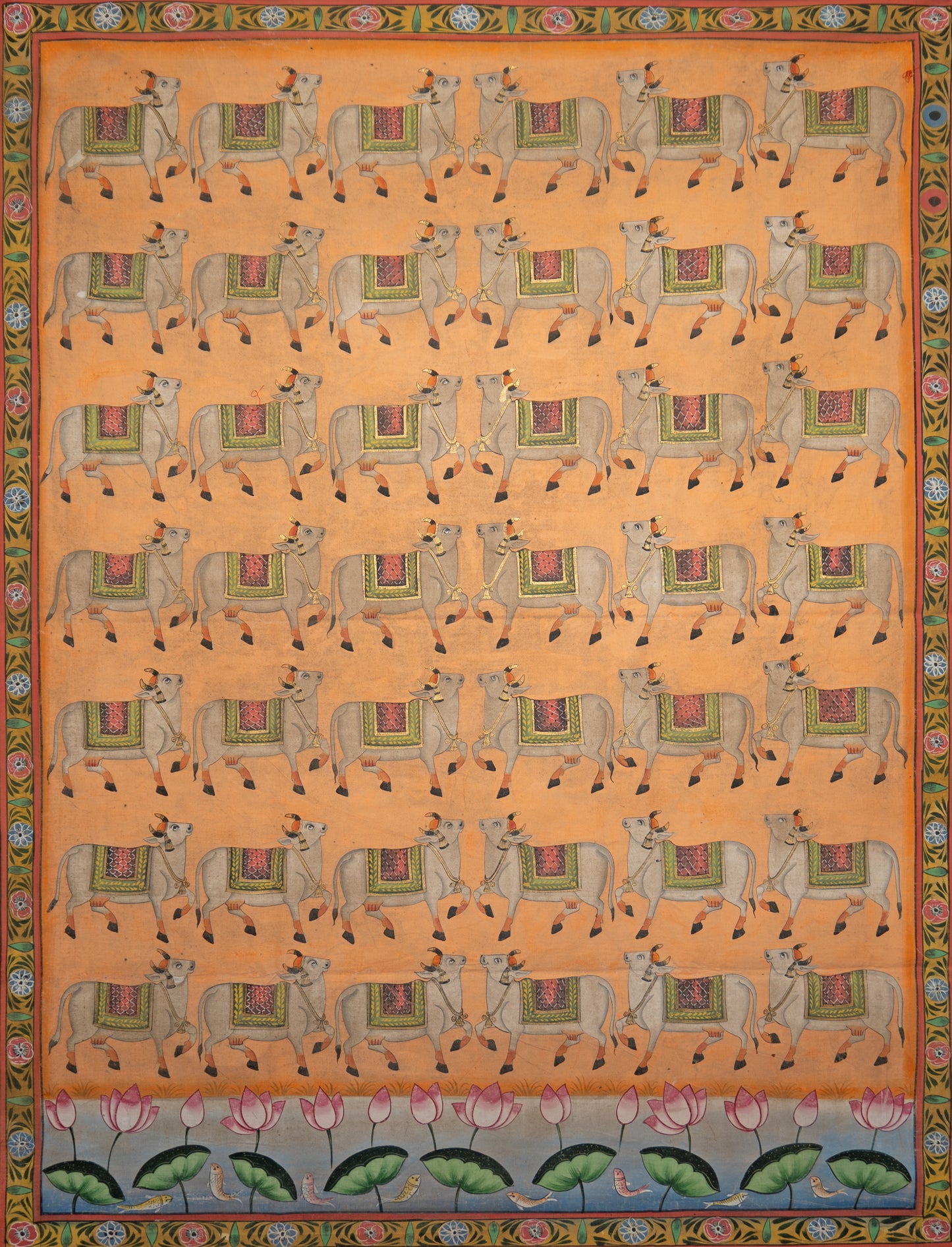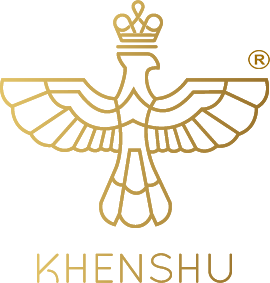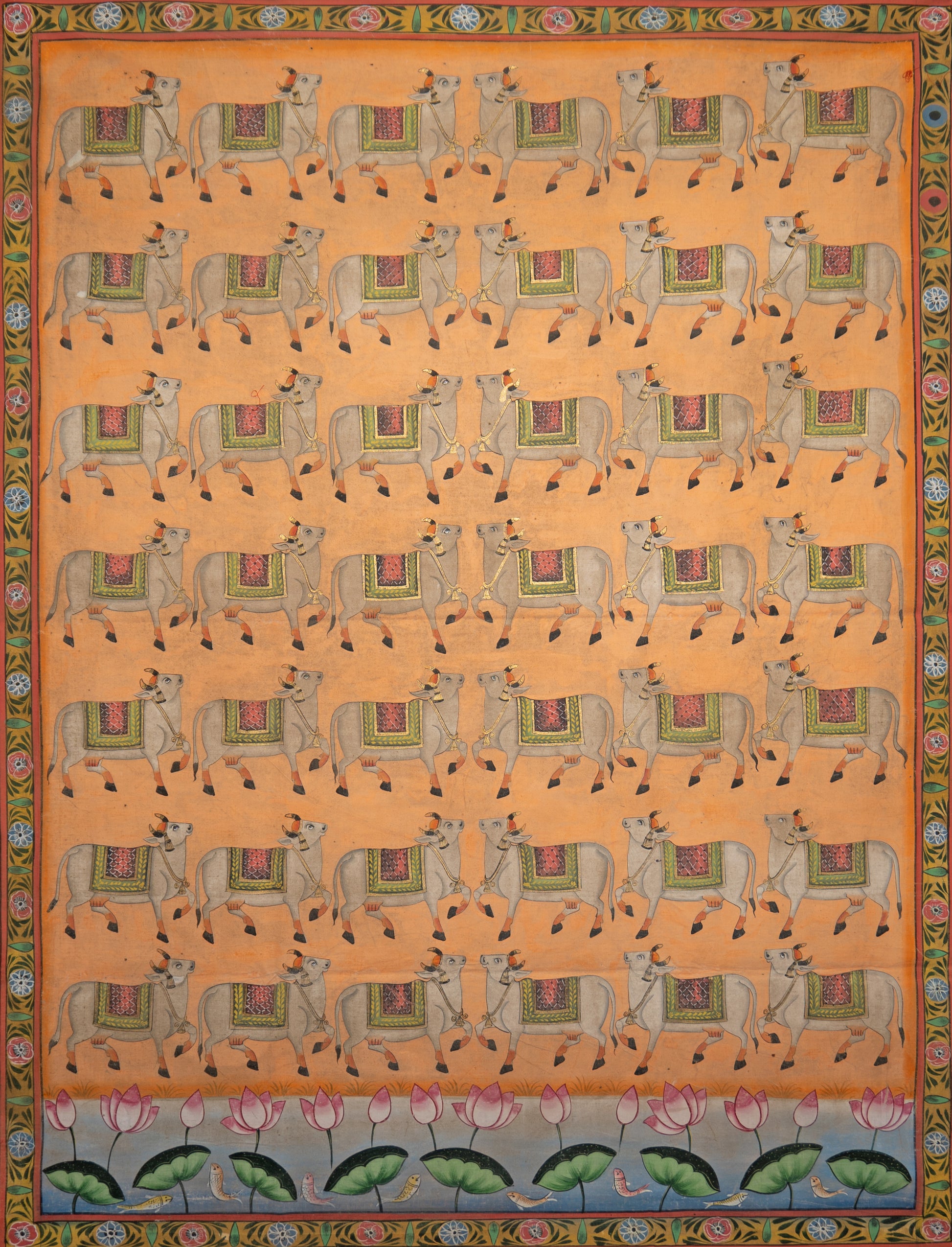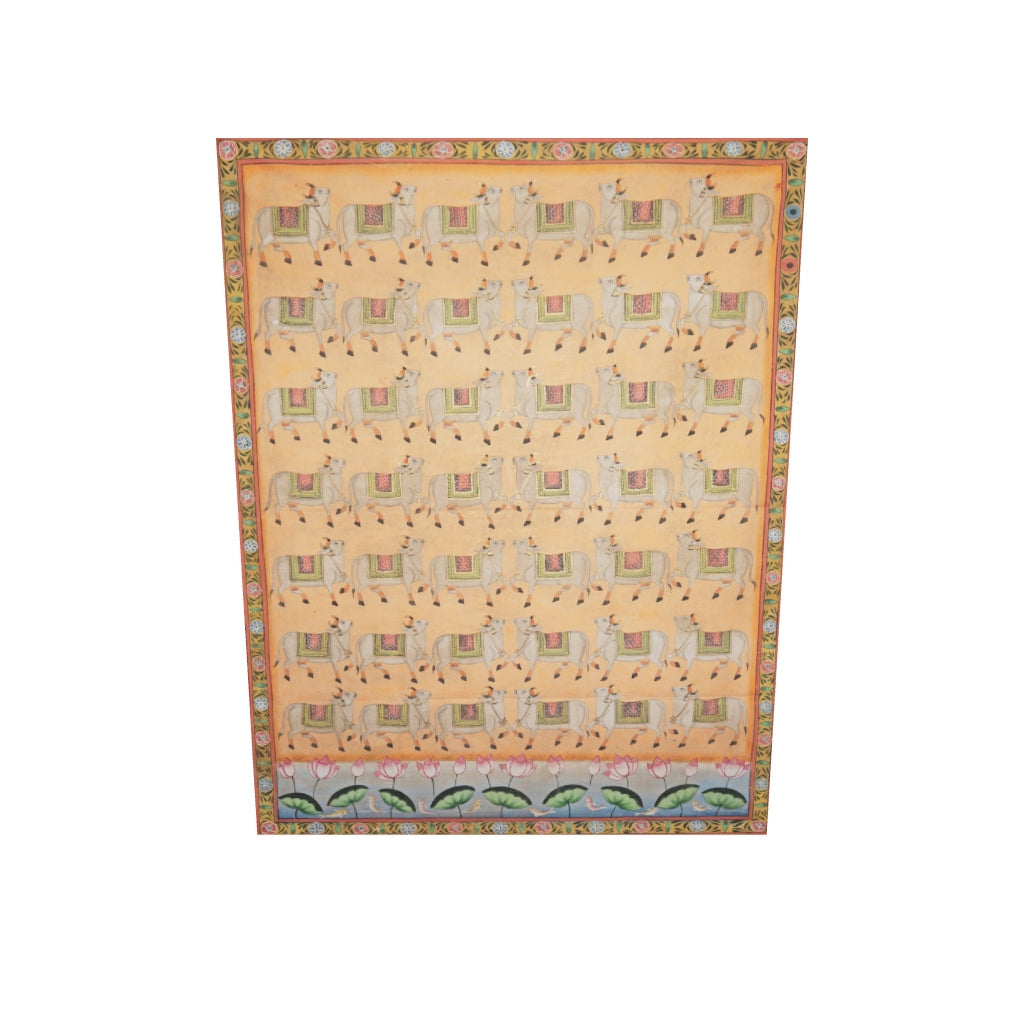My Store
Coral array
Coral array
Couldn't load pickup availability
HISTORY
Pichwai paintings are beautiful examples of India’s traditional art and craftsmanship. The word ‘Pichwai’ comes from pich (back) and wai (textile wall hanging), as these paintings were once hung behind the idol of Srinathji in temples. Over time, handcrafted Pichwai art has evolved to include not just religious themes but also peaceful scenes of nature, flowers, and animals.
DESCRIPTION
This Pichwai painting features rows of hand-painted cows, each detailed with precision and adorned with ornate textiles in soft shades of gold, ivory, and green. The repetition of form represents abundance, devotion, and the rhythmic harmony of divine order key themes in traditional Nathdwara Pichwai art.
The lotus border at the base symbolizes purity and spiritual awakening, completing the sacred composition. The warm saffron background radiates positivity, making the piece ideal for spaces that seek to invoke calm, devotion, and auspicious energy.
In Nathdwara’s temple art, cows are often depicted as companions of Krishna, symbols of nurture, gratitude, and divine service. This handcrafted interpretation transforms that timeless imagery into a refined luxury wall art piece, perfect for modern homes and spiritual interiors.
MATERIALS: Locally sourced - all organic crushed stone dyes, Fine spun cotton.
PROCESS AND CRAFT
Our paintings are made on fine spun cotton fabric using all natural organic dyes made from crushed natural stones found in Hilly regions of northern India.
The crushed stones are mixed with natural gum and water to form paint-like consistency.
The artwork is further adorned with gold leaf, sometimes 24 karat gold leaf to give it life.
These Pichwai paintings are also made on canvas or paper.
NOTE: Vintage inspired Paintings often have intentional discolouration and creases, made to add value and retain its authentic vintage aura. These are authentic paintings made by Indian artisans.
CARE
The painting should not be regularly cleaned, but only when required. The front of the painting should be cleaned gently with a soft brush to remove the loose dust on the painted surface.
If you want to use the painting without a glass backing, keep the painting away from moisture and humidity.
If you want to have an artwork in a location where there is direct sunlight at times, do consider having it framed behind a UV protected glass.
Paintings made on paper or canvas need to be framed in glass.
Share



